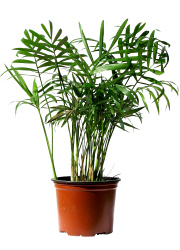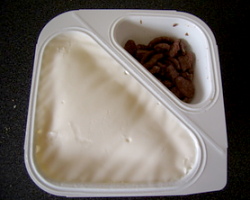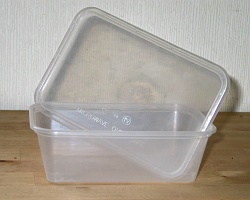How can I reuse or recycle damaged plastic plant pots?
 We’ve had an email from Elaine:
We’ve had an email from Elaine:
You’ve got lots of suggestions for things I can use as plantpots but what can I do with damaged ones? Cleaning out my greenhouse last weekend I found about thirty that had either cracked right down the side or on the bottom. I just want to recycle them really.
I’m not an expert on identifying plastic when it’s not in the standard milk bottle, water bottle or carrier bag categories but I think the plant pots I’ve got are mostly made of Polypropylene (Type 5) – a quick spot check of the bottom of pots in our living room confirms this. Type 5 plastics can be doorstep recycled in some places – check your local council’s advice on what you can or can’t include in your green bin.
Any suggestions about what Elaine could do if she can’t recycle them like that? Any bulk reuse suggestions?
























I live near a major botanical garden (mobot.org) in the US, and they have periodic planter recycling events. Maybe you can call around to similar institutions or garden stores to see if they will take damaged planters for recycling, or if they will start a program (think of the new customers it would bring!) for recycling.
For reuse…duct tape?
They could be cut up and used, under some sphagnum moss to bulk up pots and create a drainage space.
Chop them up and keep them in a bag in the gardening shed (or tote bin in my case)for convenience when re/potting.
if they are cracked, place one cracked pot inside another cracked pot. Fill with soil and away you go..
Turn them upside down and paint them bright colors, then put your non cracked potted plants on top of it and you have a plant table. I also keep my gardening tools and seeds in them on my porch (turning the crack towards the house).
Hahaha, brainstorm! You could cut them up to make a plastic mosaic? Not the best idea, but it’s something.
There was a rush of garden centres setting up plastic flower pot and plant seed tray recycling schemes a couple of years ago, however it appears most have abondoned the idea.
I have looked into recycling plastic plant pots and decided to create a website http://recycleplasticflowerpotsandplantseedtrays.com to introduce all the recycling businesses and garden centres who are willing to work togther with the recycling public.
In Dumfries and Galloway the issue seems to be low on the agenda also. We take in hard plastics like plant pots and regrind the plastic so it can be used in our recycled plastic products which can be seen as listed on the page below.
http://www.solwayrecycling.co.uk/recycled-plastic-products
Just been blogging about plastic garden waste and recycling, so please leave any tips and comments. Thanks!
http://mygardenandme.blogspot.com/2011/01/problem-with-plastic.html
If they are not that bad in condition I repair them. Several of my large plastic pots were damaged from hail or accidental damage from the weed trimmer. I try to get plastic pots in terra cotta color for the most part. You’ll see why below.
I take a margarine container (free) and cut into sheets. I use a hot glue gun and put a piece of this plastic inside the cleaned and dried pot over the hole (cut slightly larger).
I put enough glue around the damage that it oozes out of the damaged area on the outside. I take a piece of sandpaper after curing and sand the outside back down to match the pot and lightly dust the area with red oxide primer spray paint which is pretty close to the terra cotta color. The patch is unsightly on the inside but, the pot holds dirt and is unnoticeable on the outside. I have saved many plastic pots this way and have gotten plenty of freebies.